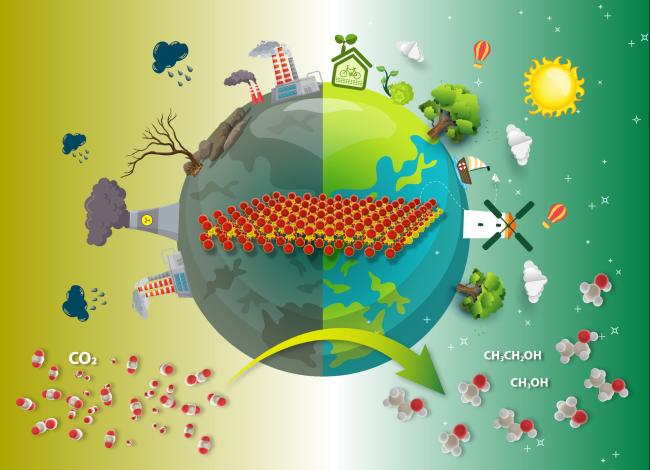Dr Suresh Pillai
Dr Suresh Pillai is very much a product of his environment.
The visionary scientist began his life in a rural village in India’s southern state of Kerala. His parents’ determination to see him attend university resulted in him not only graduating with honours in chemistry, but also going on to complete his PhD research in Nanotechnology at Trinity College Dublin and then postdoctoral research at California Institute of Technology in the United States.
However, the lasting impression made by his childhood in such a remote and arid area, with all the accompanying issues of water and energy poverty, provided the basis for his life’s work.
“I have seen water poverty in several parts of India. That’s one of the reasons I started to research into developing clean water,” he says.
“Energy is the other thing. We used to have a lot of power cuts when I was a child. There would be black outs for a couple of hours every night. You had to use a torch as an emergency lamp. Because of this, I was always thinking about developing devices that didn’t require a power source and would be cost-effective.”
Indeed, Dr Pillai, working in conjunction with his partners at the ATU, Maynooth University and the Royal College of Surgeons, is currently three years into a five-year project to roll out water disinfection technology in remote regions of India.
This is not an innovation project, it’s an implementation project. The technology already exists. There will be a number of trials will be starting soon to implement these technologies. Hopefully these will solve a significant problem – at least up to a certain level
The centrepiece to the project is a cheap and transparent plastic jerry which, when filled with water and placed in the sun, harvests solar energy to kill the bacteria inside. Dr Pillai believes this jerry can could have life-saving implications for the more than one million people who die every year due to sickness related to unsafe drinking water – many of whom are children.
“This is not an innovation project, it’s an implementation project. The technology already exists. There will be a number of trials will be starting soon to implement these technologies. Hopefully these will solve a significant problem – at least up to a certain level,” he says.
“There’s another part of the project that is slightly more complicated. It’s based on a process called advanced oxidisation. We use semiconductor material to attract light and in the presence of light a number of reactive oxidisation species form which can kill the bacteria in the water. It can also destroy chemicals like pesticide and pharmaceutical products as well – but that process is used for water sources that supply townships, not individuals.

“These technologies need to be cost effective. A transparent jerry can is a simple technology and can be transported anywhere. You can put it on the roof for several hours and the water will be ready to drink.”
Dr Pillai, whose previous successes include the development of the Kastus anti-microbial solution, a coating that’s resistant to superbugs like MRSA and E-Coli, is hopeful that the first pilot trials in India will begin in the coming months – once the final safety checks have been completed on the plastic.
“The trails will be starting as soon as we optimise the material so hopefully we’ll be starting that soon in collaboration with our Indian partners. We are also looking at the toxicology studies of the plastics involved to make sure they’re not toxic to humans. So far our research is good. There are no toxins coming from the plastics. But we need to do a more detailed study to understand the reaction between plastics and water.
The Atlantic Technological University (ATU) was established in April this year following the merger of three institutes of technology – Galway-Mayo (GMIT), Letterkenny (LYIT) and IT Sligo. The university has more than 20,000 registered students at its eight campuses across Galway, Mayo, Donegal and Sligo.
Dr Pillai is excited about the opportunities for collaboration – even if he is already working with colleagues on the Letterkenny campus on a ground-breaking €1.1million project to develop materials capable of generating electricity from clothing.
“We have collaborations ongoing with our colleagues in other areas of the ATU. For instance, we have a project supported by Science Foundation Ireland and the Engineering and Physical Sciences Research Council in the UK that looks into how to harvest the kinetic energy generated in clothing nanotechnology.
“The idea is that triboelectric nanogenerator (TENG) materials in clothing move back and forth with the motion of the wearer, producing an electrical current. That TENG project is supported by researchers at the Letterkenny campus who have expertise in fabrication and more engineering aspects. They help us develop our devices as a product.”
While the technology is still in development, Dr Pillai foresees a finished product being used in jackets or jumpers, the friction creating enough charge enough to power a small device, a smartwatch or even a phone. The technology, he says, would be ideal for hikers or people living in remote locations without access to power.
“Ideally you’d like to see it used in the developing world but it also has applications for people who go on long hiking tours in remote areas. There is a thought, too, that it might have military applications.”